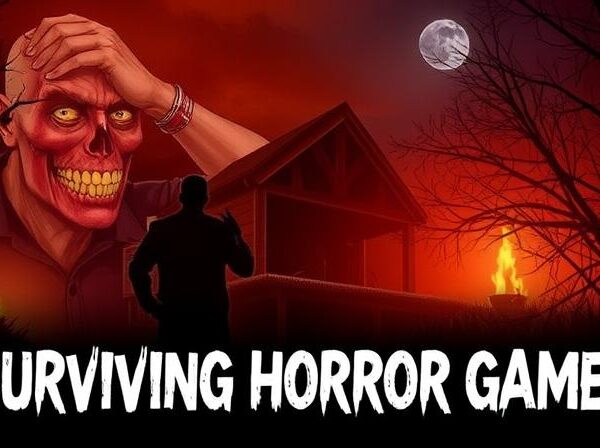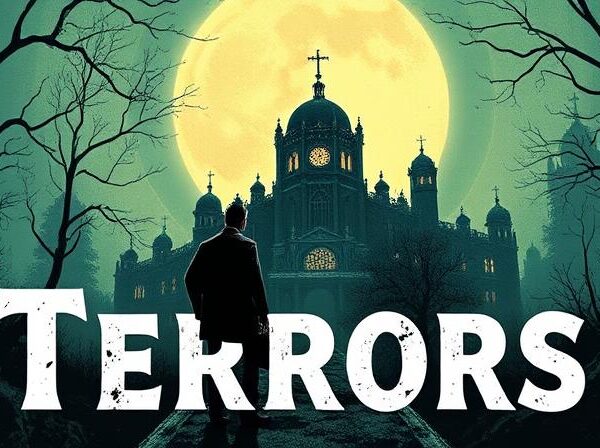Are Survival and Horror Games Suitable for All Players?
Understanding the Appeal of Survival and Horror Games
Survival and horror games have gained immense popularity in recent years, captivating the attention of gamers worldwide. One prominent factor contributing to their appeal is the adrenaline rush they provide. The intense and gripping gameplay, coupled with suspenseful storylines, keeps players on the edge of their seats, engrossed in the virtual world. These games tap into our primal instincts, triggering a fight-or-flight response and creating a sense of urgency and excitement. The fear of the unknown, the anticipation of lurking danger, and the challenge of survival all contribute to the immersive experience that keeps players coming back for more.
Additionally, the appeal of survival and horror games lies in the unique sense of accomplishment they offer. Overcoming formidable obstacles and prevailing in the face of adversity provides players with a profound sense of achievement. The satisfaction derived from outsmarting challenging puzzles, discovering hidden paths, and successfully navigating treacherous environments is unparalleled. Moreover, the element of risk and consequence adds another layer of excitement, as a wrong decision or failure to react promptly can lead to irreversible consequences. This combination of high stakes, rewarding progression, and skillful gameplay is what creates a compelling allure for fans of survival and horror games.
Exploring the Challenging Nature of Survival and Horror Games
Survival and horror games have consistently captivated gamers around the world with their unique and challenging gameplay. These games often present players with perilous situations where they must navigate through treacherous environments, confront menacing creatures, and make critical decisions that impact their virtual survival. The challenging nature of these games lies not only in the physical aspects but also in the emotional and psychological tension they create. The constant sense of danger and uncertainty instills a heightened level of alertness, forcing players to remain vigilant and adapt quickly to survive. This element of challenge becomes increasingly appealing to gamers seeking a more immersive and adrenaline-filled gaming experience.
One of the key aspects that make survival and horror games challenging is the limited availability of resources. Players are often faced with scarcity, whether it be limited ammunition for their firearms, dwindling health supplies, or a finite amount of time to complete objectives. This scarcity forces players to make strategic choices and prioritize their actions carefully. They must efficiently manage their available resources to avoid running out entirely and becoming vulnerable in the face of imminent threats. The challenge lies in finding the delicate balance between conservation and utilization, as wasting valuable resources can prove detrimental while conserving them excessively can hinder progress. This aspect of gameplay adds a layer of complexity and forces players to think critically and tactically, enhancing the overall challenge and rewarding those who can successfully navigate these limitations.
Assessing the Impact of Intense Themes and Content on Players
When it comes to survival and horror games, one cannot overlook the impact of intense themes and content on players. These games are known for their ability to immerse players into dark and terrifying environments, often featuring violence, gore, and psychological distress. The intensity of these themes and content can have a profound effect on players, evoking strong emotions and creating an atmosphere of fear and suspense. The realistic graphics, chilling sound effects, and gripping narratives further enhance the overall experience, leaving players on the edge of their seats and sometimes even causing a visceral reaction.
For some players, the impact of intense themes and content in survival and horror games can be thrilling and exhilarating. They may enjoy the adrenaline rush and the challenge of facing their fears within the safety of a virtual world. However, it is important to recognize that these games can also have negative consequences for certain individuals. The intense nature of the themes and content can lead to anxiety, fear, and even nightmares, especially for those who are particularly sensitive or struggle with mental health issues. Additionally, the realistic portrayals of violence and graphic imagery can desensitize players to real-life violence and can perpetuate harmful stereotypes or behaviors if not approached with caution. The impact of intense themes and content in survival and horror games should never be underestimated, as it can influence players both psychologically and emotionally.
Examining the Psychological Effects of Survival and Horror Games
Survival and horror games have gained significant popularity in recent years, captivating players with their immersive and intense experiences. These games are designed to provide a thrilling and adrenaline-pumping adventure, often incorporating elements of fear and danger. As players traverse through dark and eerie settings, constantly being challenged to overcome obstacles and survive, they are unknowingly exposing themselves to various psychological effects. The constant state of heightened alertness and anxiety in these games can evoke a range of emotional responses, such as fear, stress, and even excitement.
One of the most notable psychological effects of survival and horror games is the sense of immersion they create. Players often find themselves completely engrossed in the game world, feeling as if they are personally experiencing the events unfolding before them. This level of immersion can result in an intense emotional connection, leading to heightened levels of fear and suspense. The combination of realistic graphics, haunting audio effects, and intricate storytelling contributes to the psychological impact, further blurring the boundaries between reality and the virtual realm.
Considering the Age Appropriateness of Survival and Horror Games
Determining the age appropriateness of survival and horror games is a decision that requires careful consideration. While many factors come into play, such as the individual child’s maturity level and their ability to distinguish between fantasy and reality, it is important to recognize that these types of games often contain intense and frightening themes that may not be suitable for all age groups.
Younger children, in particular, may struggle to understand or process the graphic violence, jump scares, and psychological horror elements that are often present in these games. Such content can have a significant impact on their emotional and psychological well-being, potentially causing feelings of fear, anxiety, and even nightmares. Therefore, parents should be cautious when allowing younger children to engage with survival and horror games, carefully evaluating their child’s readiness and ability to handle such content before granting permission.
Addressing the Physical and Emotional Reactions of Players
Survival and horror games have long been known to evoke strong physical and emotional reactions from players. The intense and suspenseful gameplay can elicit a range of bodily responses, such as increased heart rate, sweaty palms, and heightened senses. These physical reactions often add to the immersive experience, as players feel a genuine sense of fear and adrenaline rush. The combination of realistic graphics, atmospheric sound design, and tense gameplay mechanics creates an environment that can physically affect players, making them feel as if they are truly in the perilous situations depicted in the game.
In addition to physical reactions, players also experience a wide range of emotional responses while engaging with survival and horror games. These games often tap into primal fears, such as the fear of the unknown, the fear of death, and the fear of isolation. As players navigate through dark and dangerous environments, they may feel a sense of dread, anxiety, and even terror. These emotional reactions vary from player to player, influenced by individual thresholds for fear and personal experiences. While some players may find immense enjoyment in the adrenaline rush and thrill of being scared, others may find it overwhelming or uncomfortable. The emotional impact of survival and horror games can be both captivating and challenging, creating a unique and immersive gaming experience.
Evaluating the Skill Requirements and Learning Curve of Survival and Horror Games
When it comes to survival and horror games, one of the key aspects that players often consider is the skill requirements and learning curve involved. These games are known for their intense and challenging nature, requiring players to have a certain level of skill and strategy to navigate through them successfully. From resource management to combat techniques, each game presents its own unique set of skills that players must master in order to progress. The learning curve can vary from game to game, with some offering a gradual progression that allows players to learn and adapt at their own pace, while others might have a steep learning curve that requires quick thinking and precise execution.
For many players, the skill requirements and learning curve of survival and horror games can be both thrilling and frustrating at the same time. On one hand, the challenge can provide a sense of accomplishment and satisfaction when successfully overcoming difficult obstacles or enemies. It can also foster a sense of immersion and engagement as players constantly strive to improve their skills and progress further in the game. On the other hand, it can be disheartening and discouraging when repeatedly facing failure or struggling to grasp the mechanics and strategies necessary to advance. This aspect of survival and horror games adds a layer of complexity to the overall gaming experience, appealing to those seeking a more demanding and rewarding gameplay.
Discussing the Importance of Player Preferences and Comfort Levels
Player preferences and comfort levels play a crucial role in the enjoyment and overall experience of survival and horror games. Each individual has unique preferences in terms of gameplay mechanics, visual aesthetics, and thematic elements. Some players may prefer intense and challenging games that push their limits, while others may prefer a more relaxed and atmospheric experience. Understanding and respecting these preferences is essential for game developers, as it allows them to create diverse experiences that cater to a wide range of players. By providing options such as adjustable difficulty levels and customizable settings, developers can empower players to tailor their gameplay experience to suit their preferences and comfort levels.
Moreover, comfort levels are closely tied to the emotional and psychological impact of survival and horror games. These games are designed to evoke fear, tension, and suspense, which can vary in intensity depending on the player. Some individuals may experience heightened levels of anxiety or distress when faced with intense and graphic content, while others may find it exhilarating and immersive. It is important for players to recognize and communicate their comfort boundaries to ensure a healthy and enjoyable gaming experience. Game developers should also consider including features such as content warnings and accessibility options to accommodate different comfort levels and promote inclusivity within the gaming community.
Analyzing the Role of Personal Experience and Emotional Resilience in Gaming
Personal experience and emotional resilience play a crucial role in gaming, particularly in the survival and horror genres. Each individual brings their own unique background and life experiences to the gaming world, which can significantly impact their gameplay and overall enjoyment of these types of games. People with previous exposure to real-life challenges and adversity may find themselves better equipped to handle the intense and often stressful situations presented in survival and horror games. Their ability to draw upon their emotional resilience and cope with negative emotions may allow them to navigate the virtual world more effectively, making rational decisions and reacting appropriately to dangerous situations. On the other hand, individuals who have had limited exposure to hardships may find themselves more susceptible to fear and anxiety while playing these games. This could result in heightened emotional responses and potentially impacts their ability to progress in the game or experience the intended enjoyment.
In addition to personal experience, emotional resilience – the ability to adapt and bounce back from stressful or traumatic events – also plays a vital role in gaming. The virtual environment created in survival and horror games often presents players with challenging and distressing scenarios. Emotional resilience enables players to withstand the psychological pressures that come with being immersed in these intense experiences. It allows them to remain composed, think critically, and make decisions without being overwhelmed by fear or anxiety. However, individuals with lower emotional resilience may find it more difficult to manage their emotions, leading to heightened stress and potential negative effects on their well-being. Thus, the role of personal experience and emotional resilience in gaming should not be overlooked, as they significantly shape players’ responses and experiences within the virtual world.
Recognizing the Potential Benefits and Drawbacks of Survival and Horror Games
Survival and horror games offer players a thrilling and immersive experience that can both entertain and challenge them. These games often place players in intense and suspenseful situations where their skills and decision-making abilities are put to the test. By navigating through dangerous environments, solving puzzles, and overcoming obstacles, players are able to experience a sense of accomplishment and adrenaline rush that can be highly rewarding. Additionally, the intense themes and narratives present in survival and horror games can create a deep emotional connection with the players, enabling them to feel a range of emotions such as fear, excitement, and tension.
However, it is important to recognize that these games may not be suitable for everyone. The intense and graphic content in survival and horror games can elicit strong emotional and physical reactions in players, which may not be appealing to all individuals. Some players may find the intense themes and graphic violence disturbing or distressing, leading to negative effects on their mental well-being. Furthermore, these games often require a certain level of skill and strategy, making them challenging for newcomers or less experienced players. It is crucial for individuals to consider their own preferences, comfort levels, and emotional resilience before engaging in survival and horror games to ensure a positive gaming experience.











